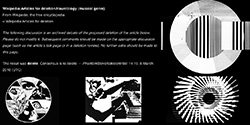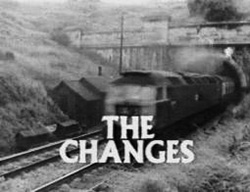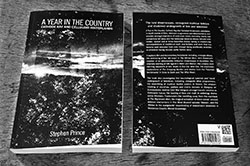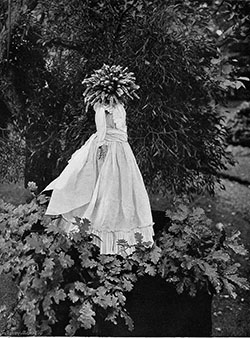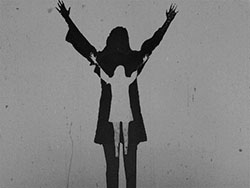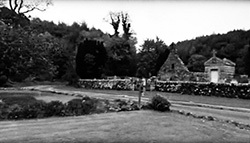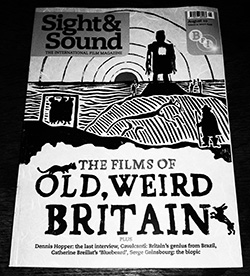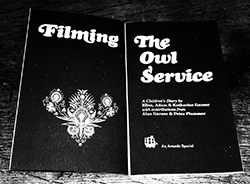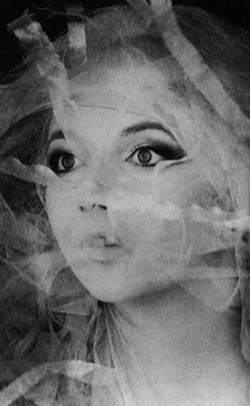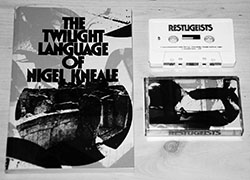If Jonny Trunk of archival record label Trunk Records collaborated with The Modernist Magazine to put together a book which documented post-war until privatisation British Rail design and aesthetics it might well turn out something like British Rail: Designed 1948-97.
The book was written and compiled by David Lawrence and collects logo, building, vehicle, uniform etc design and prototypes alongside extensive accompanying text.
It is a publication not just for the more archetypal train-spotter enthusiasts but as a quote from Wayne Hemmingway states on the back of the book:
“Anyone with an eye for evocative design and graphics, and anyone with an interest in social history, can’t help but get drawn in…”
The book contains a certain appreciative curatorial sense which subtly takes in such work having at times an almost accidental utilitarian art or at least grand reaching or even high concept aspect.
While that element is not as overtly foregrounded as say in the book Own Label: Sainsburys Design Studio: 1962 – 1977, in which Jonny Trunk collected a supermarket’s period packaging and design, it is still present and makes the book at least a loosely connected shelf-fellow to such collections.
It could well be read as a form of now semi-forgotten modernist history that considers a section of British endeavour from a time of state-sponsored industry. Viewed now much of the design that is featured appears to be from some almost impossibly far off part of history, although it is in fact from a relatively modern period of history.
Anyways, in this post I collect together a few of the images and pages from the book that particularly caught my eye.
Some of the building design featured in the book – particularly the one on the top-right above – has an almost avant garde aspect and puts me in mind of the apparent exoticisms but actually quite day-to-day structures of Soviet bus stops which can be found in Christopher Herwig’s book of the same name.
British Rail goes kind of groovy and sixties mod-pop in the late-1960s and turn of the decade, with a touch of what could now be called retro futurism:
“Seaspeed hovercraft pursurettes wore ‘Hoversuits’ made from a synthetic jersey textile called Koratron…”
(From the text in the book. Koratron outfits left and bottom right.)
Stylistically the above image from 1973 of a “proposed second class saloon” railway carriage interior seems more in keeping with my own personal memories of British Rail period design; there is a glamour and style there but it is more Leonard Rossiter-esque than space age mod-pop. Think Rising Damp, 1970s Leonard Rossiter and Joan Collins Cinzano adverts and The Rise and Fall of Reginald Perrin.
Following on from Koratron and hoversuits, there was some rather grand (or grandiloquent), futuristic and sometimes almost Orwellian sounding language used to describe various British Rail orientated design, committees etc.
Along which lines, above is the “Moto-X” building system on one of the British Rail stations.
And continuing along such lines, above is a corporate identity booklet produced in partnership with British Rail’s “Industrial Design directorate.” Not committee. Not department but “directorate”.
Well, you don’t get any more brutalist architecture than this. As with the use of the word “directorate” it brings to mind the phrase Soviet-Britain.
Above is a prototype buffet kitchen car…
While above left is a then glamorously modern seeming advert for a floor covering.
A further selection of at times almost Mad Men-esque midcentury modern populuxe-like British Rail lounge etc design.
In the book some of such photographs of the lounge bars, their prototypes etc seem to present a kind of swinging, stylish, cosmopolitan take on British railway history that seems somewhat at odds with the reality of them (at least as I remember them from my own younger days) which was often nearer to a kind of slightly down at heel functionalism.
I think it’s hard to truly think of anything being high style when reminded of these seat fabrics…
A curiously posed almost fashion line-up photograph of British Rail staff and their uniforms.
And more looking to the future; “PEP – the commuter train of the future”.
It is difficult now to objectively consider whether these designs did once seem genuinely forward looking as they have come to be so rooted in and connected to particular slightly downbeat utilitarian period tropes and aesthetics.
Returning to slightly grandiloquent language; British Rail paint colours are described as “Experimental blues”.
In a way and also returning to Soviet-Britain, such language and its aspirations cause me to think of the grand reaching aspects of the Soviet era social project in the 20th century; I suppose that state-sponsored and nationalised industry such as British Rail is not, at least in a purely philosophical rather than real world application manner, all that far removed at points from the communal/state property aspects of the former Soviet Union.
Brutalist corporate literature design…
It is hard to tell if it is due to the colours of the period film stock in the photographs above but there seems to be a somewhat large gap between the well-hued and attractively presented modernist and slightly art deco inspired future shown in the above illustration for a proposed station and the reality of such buildings when completed (see the lower two images).
And finally; a selection of promotional brochures; the one featured top right has an almost Wicker Man-esque sense of accidental folk-art to it, which as I’ve mentioned elsewhere at A Year In The Country could well be filed alongside some of the design work in the aforementioned Own Label: Sainsburys Design Studio: 1962 – 1977, a book which was compiled by Jonny Trunk (see images below).
Elsewhere:
- British Rail Designed 1948-97 at its publishers Crecy. Order it here.
- The Modernist Magazine
- Trunk Records.
- And appropriately enough an album of recordings of the public announcements of The MM’s Bar buffet, from a Midland’s Mainline train, which was released by Trunk Records.
- Own Label: Sainsburys Design 1962-1977.
- Christopher Herwig’s Soviet Bus Stops. Order it here.
Elsewhere at A Year In The Country:
- Ether Signposts #45/52a: Further Accidental Folk-Art
- The Seasons, Jonny Trunk, the BBC Radiophonic Workshop and Howlround – A Yearning for Library Music, Experiments in Educational Music and Tape Loop Tributes: Chapter 38 Book Images
- Wanderings #28/52a: The Modernist / Sacred Suburbs / Concrete Belief Systems
- Week #9/52: Christopher Herwig’s Soviet Bus Stops, echoes of reaching for the cosmos, folkloric breakfast adornment and other artfully pragmatic curio collectings, encasings and bindings…





















